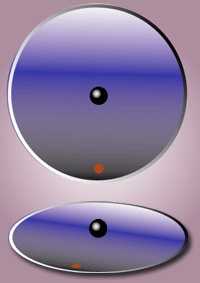<< coordination parameters | coriolis effect | coriolis force >>
Back to: "C"
coriolis effect
- Definição1
- The tendency of a rotor blade to increase or decrease its velocity in its plane of rotation when the center of mass moves closer or futher from the axis of rotation.
- Fonte1
- FEDERAL AVIATION ADMINISTRATION. Rotorcraft flying handbook (FAA-H-8083-21). Washington, DC: FAA, 2000. Disponível em: http://www.faa.gov/library/manuals/aircraft/media/faa-h-8083-21.pdf. Acesso em: 10 fev. 2012.
- Fonte2
- FEDERAL AVIATION ADMINISTRATION. Helicopter flying handbook (FAA-H8083-21A). Washington, DC: FAA, 2012.
- Contexto
- The tendency of a rotor blade to increase or decrease its velocity in its plane of rotation due to mass movement is known as Coriolis Effect, named for the mathematician who made studies of forces generated by radial movements of mass on a rotating disc.
- Subárea1
- Aerodynamics
- Related Term
- coriolis force
- coriolis illusion
- Português
- efeito coriolis
- Imagem

In the inertial frame of reference (upper part of the picture), the black object moves in a straight line, without significant friction with the disc. However, the observer (red dot) who is standing in the rotating (non-inertial) frame of reference (lower part of the picture) sees the object as following a curved path due to the Coriolis and centrifugal forces present in this frame.
Fonte: http://en.wikipedia.org/wiki/File:Corioliskraftanimation.gif

